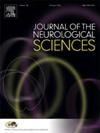Clinical features and prognosis of postpartum lower extremity nerve injury: A four-year single-center experience in Israel
IF 3.2
3区 医学
Q1 CLINICAL NEUROLOGY
引用次数: 0
Abstract
Background
Postpartum lower extremity nerve injury (LENI) is a recognized but often underdiagnosed complication of childbirth, presenting with symptoms ranging from transient sensory disturbances to persistent motor deficits. Although the reported incidence is low, research on the topic remains limited, and no studies to date have examined this phenomenon in the Israeli population.
Methods
A retrospective review was conducted of 531 neurological consultations from the maternity ward at Shamir Medical Center between 2019 and 2022. Cases of suspected LENI – postpartum leg weakness, paresthesia, or difficulty walking - were further analysed. Clinical data, delivery characteristics, and electrophysiological findings were reviewed.
Results
Among 33,404 deliveries during the study period, 23 cases of suspected LENI were identified (0.069 %). Most women (61 %) presented with isolated sensory symptoms, primarily in the distribution of the lateral femoral cutaneous nerve. Nine women (39 %) exhibited motor deficits, predominantly following vaginal deliveries with epidural anaesthesia. In 67 % of motor cases, symptoms affected the right side. While most patients experienced full recovery within weeks, 22 % reported persistent symptoms at follow-up.
Conclusion
LENI is a rare complication of childbirth, generally associated with a favorable prognosis. The observed incidence at Shamir Medical Center was low, possibly reflecting underdiagnosis of milder cases. This is the first study to characterize postpartum LENI in the Israeli population. A prospective study is planned to further elucidate its pathophysiology and risk factors.
产后下肢神经损伤的临床特征和预后:以色列四年单中心经验。
背景:产后下肢神经损伤(LENI)是一种公认但常被误诊的分娩并发症,其症状从短暂的感觉障碍到持续的运动障碍。虽然报告的发病率很低,但关于这一主题的研究仍然有限,迄今为止还没有研究在以色列人口中检查这一现象。方法:对2019 - 2022年沙米尔医疗中心产科病房531例神经科会诊进行回顾性分析。疑似LENI的病例——产后腿部无力、感觉异常或行走困难——被进一步分析。本文回顾了临床资料、分娩特点和电生理结果。结果:在研究期间的33,404例分娩中,发现23例疑似LENI(0.069%)。大多数女性(61%)表现为孤立的感觉症状,主要表现在股外侧皮神经的分布。9名妇女(39%)表现出运动障碍,主要是在硬膜外麻醉下阴道分娩后。在67%的运动病例中,症状影响到右侧。虽然大多数患者在几周内完全康复,但22%的患者在随访时报告持续症状。结论:LENI是一种罕见的分娩并发症,通常预后良好。沙米尔医疗中心观察到的发病率很低,可能反映了较轻病例的诊断不足。这是对以色列人口产后LENI的首次研究。为进一步阐明其病理生理及危险因素,拟开展前瞻性研究。
本文章由计算机程序翻译,如有差异,请以英文原文为准。
求助全文
约1分钟内获得全文
求助全文
来源期刊

Journal of the Neurological Sciences
医学-临床神经学
CiteScore
7.60
自引率
2.30%
发文量
313
审稿时长
22 days
期刊介绍:
The Journal of the Neurological Sciences provides a medium for the prompt publication of original articles in neurology and neuroscience from around the world. JNS places special emphasis on articles that: 1) provide guidance to clinicians around the world (Best Practices, Global Neurology); 2) report cutting-edge science related to neurology (Basic and Translational Sciences); 3) educate readers about relevant and practical clinical outcomes in neurology (Outcomes Research); and 4) summarize or editorialize the current state of the literature (Reviews, Commentaries, and Editorials).
JNS accepts most types of manuscripts for consideration including original research papers, short communications, reviews, book reviews, letters to the Editor, opinions and editorials. Topics considered will be from neurology-related fields that are of interest to practicing physicians around the world. Examples include neuromuscular diseases, demyelination, atrophies, dementia, neoplasms, infections, epilepsies, disturbances of consciousness, stroke and cerebral circulation, growth and development, plasticity and intermediary metabolism.
 求助内容:
求助内容: 应助结果提醒方式:
应助结果提醒方式:


